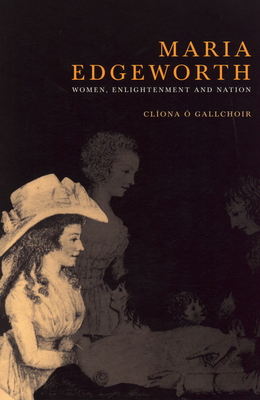Maria Edgeworth: women, enlightenment and nation
Sally Richardson reviews Maria Edgeworth: women, enlightenment and nationby Cliona ó Gallchoir, UCD PRESS, ISBN 1 904558 45 3, £18.95 €25.00

THE TRAUMA and dislocation of the Act of Union of 1800 is at the centre of Maria Edgeworth's writing. Her early published works contributed to the revolutionary ferment that preceded it and in her subsequent writing we find her attempting to understand and shape Irish identity in a new situation where the government was no longer even in the same country.
Edgeworth was one of the most influential writers of her period and was crucial in the development of the novel, expanding its horizons and finding new subjects and new angles to approach them from. Her Irish experience played a vital role in this.
She was born in what Lady Clonbrony called "Hoxfordshire" and moved to the Edgeworth estate in Co Longford when she was fifteen. Clíona Ó Gallchoir's book examines Edgeworth's writing in a sort of national triangle of England, France and Ireland. France, like Ireland, was to England a dangerous "other" -- either dangerously Catholic or dangerously revolutionary, always threatening to subvert the established Protestant order. Edgeworth was influenced by French women writers like Germaine de Stael and Madame de Genlis, and continued and developed their discourse of nation and gender.
Edgeworth was both a product and a supporter of Enlightenment values, but at the same time critiqued its limitations, particularly those imposed by its male proponents. Clíona Ó Gallchoir points out how ancien regime France, for all its faults, nevertheless provided a public sphere where women were not only included, but influential, and which was largely closed down by the Revolution.
If she underestimates the extent to which women both demanded their share of space on the revolutionary platform and shaped the revolutionary agenda, in Ireland as well as in France, she nevertheless shows that gender issues at that period were far from simple.
A highly political writer, she turns her domestic settings into public spaces, making previously marginal voices heard. These voices are frequently female, though not always. Her slyly subversive novel Castle Rackrent shows a decaying Irish gentry family from the point of view of a gossipy old retainer. It was written while Ireland was convulsed with rebellion and published in 1800.
Edgeworth's work is complex, and the ideas discussed in this book are complex; and a short review like this can provide no more than a cursory overview. Edgeworth helped to create spaces for Ireland and for women. Her work is still relevant and still worth reading, as Ó Gallchoir's reassessment of her writing demonstrates.
Connolly Association, c/o RMT, Unity House, 39 Chalton Street, London, NW1 1JD
Copyright © 2001 Connolly Publications Ltd

